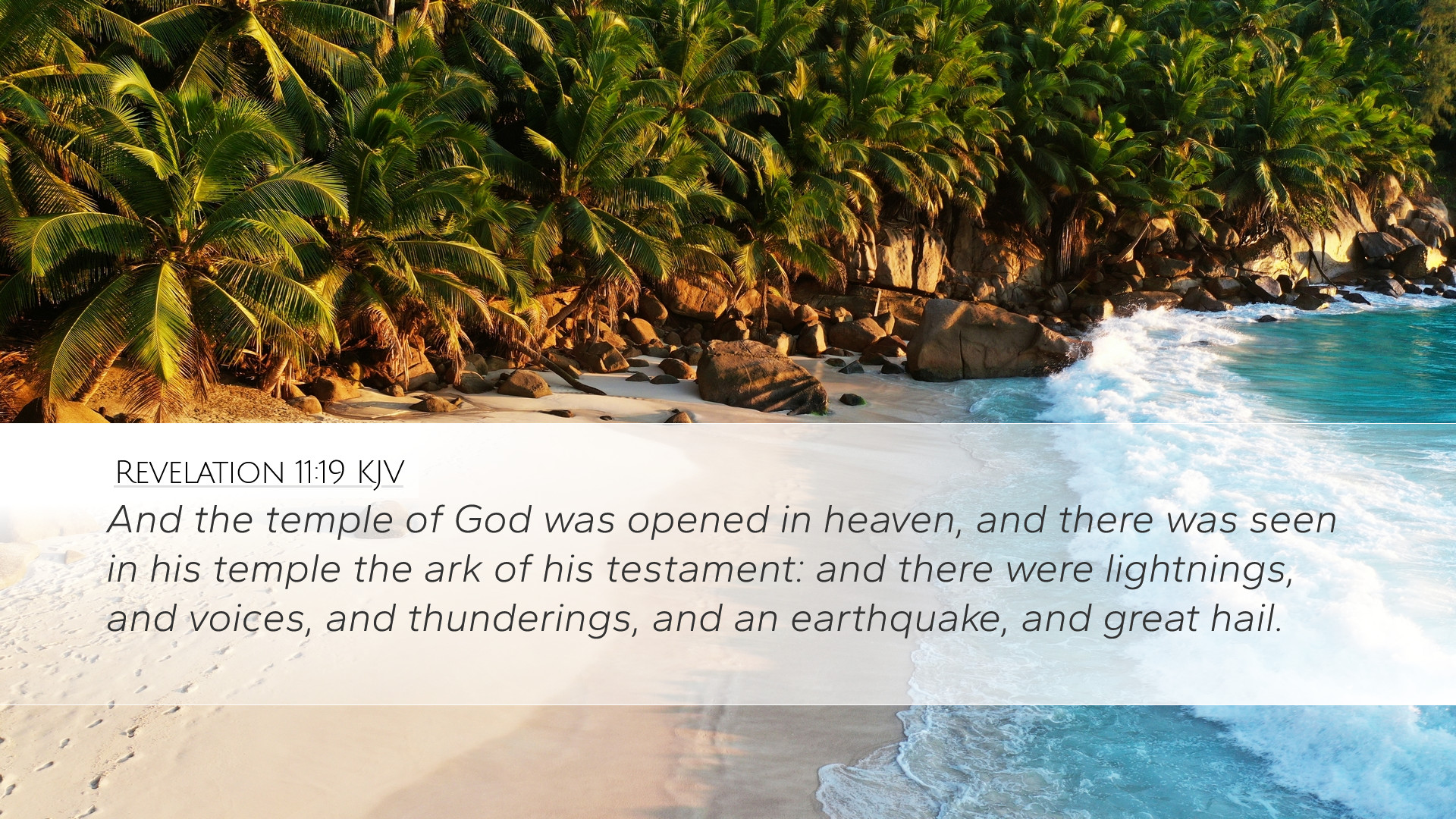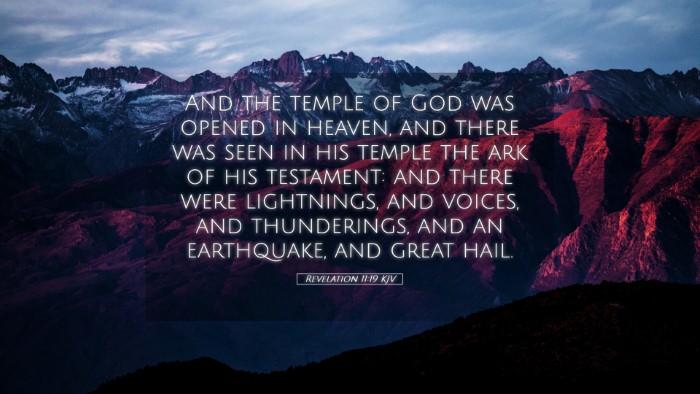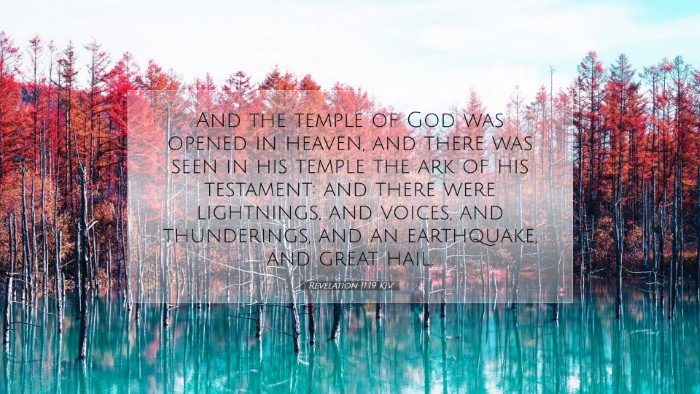Commentary on Revelation 11:19
Verse: "And the temple of God was opened in heaven, and there was seen in his temple the ark of his testament: and there were lightnings, and voices, and thunderings, and an earthquake, and great hail."
Introduction
The eleventh chapter of Revelation concludes with a powerful vision that symbolizes the climax of God's divine justice and the inauguration of His eternal kingdom. This verse serves as a pivotal point in the apocalyptic narrative, revealing both the majesty of God and the hope awaiting believers. Scholars and commentaries, including those by Matthew Henry, Albert Barnes, and Adam Clarke, provide profound insights into the implications of this verse.
The Temple of God in Heaven
Matthew Henry emphasizes the significance of the heavenly temple, indicating that it represents the place of God’s presence and the divine governance over the universe. The opening of the temple suggests an unveiling of God's holiness and glory, inviting the faithful into a deeper communion with Him.
Furthermore, Adam Clarke notes that the temple signifies the covenant relationship between God and His people. The mention of it being "opened" implies accessibility for the faithful, contrasting the closed nature of the earthly temple prior to Christ's atoning work. This moment marks a transition from the old covenant to the new, revealing that believers can approach God directly through Christ.
The Ark of His Testament
The reference to the ark of the testament evokes rich theological themes. Albert Barnes outlines that the ark was traditionally the symbol of God's covenant with Israel, containing the tablets of the law, Aaron’s rod, and manna. This symbolism extends to underscore the faithfulness of God to His promises, as the ark represents the presence of the divine amidst His people.
Henry also highlights the significance of the contents of the ark, suggesting that it points to the ultimate fulfillment of God’s law and grace in Christ. The presence of the ark in heaven serves as a reminder that God’s covenant is eternal and unbreakable, reaffirming the hope of redemption for those who trust in Him.
Heavenly Phenomena
The dramatic imagery of lightnings, voices, thunderings, earthquakes, and great hail signifies the supreme authority and power of God. Clarke interprets these symbols as manifestations of God's judgment and glory. They indicate that His presence is not to be taken lightly; where God is, there is majesty and fear.
In conjunction with this, Barnes elaborates that these phenomena often accompany pivotal moments in biblical history, serving as a divine response to human events. They highlight the sovereignty of God as He governs the course of history and executes His plans. For the readers of Revelation, it communicates assurance that despite earthly trials, God’s ultimate purpose prevails.
Theological Implications
- Covenant Assurance: The passage reaffirms the believer’s assurance in God’s covenant promise, reminding them of His steadfastness and faithfulness throughout history.
- Judgment and Glory: The storm-like imagery serves as a warning of impending judgment, emphasizing the seriousness of divine holiness and the necessity of righteousness among God's people.
- Eschatological Hope: The opening of the heavenly temple and the visibility of the ark invoke hope for future glory and a complete restoration in the eschaton, encouraging believers to remain faithful amid persecution.
Conclusion
Revelation 11:19 is a profound verse that encapsulates key theological truths about God’s nature as holy, just, and faithful. Through the insights gained from public domain commentaries, we see a multifaceted understanding of the text that speaks to both the present struggles of believers and the glorious hope that awaits them. As pastors, theologians, and students engage with this verse, they are encouraged to reflect on the richness of God’s promises and the awe-inspiring reality of His presence among His people.


